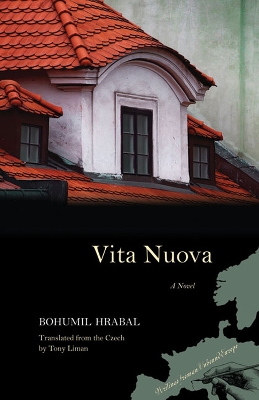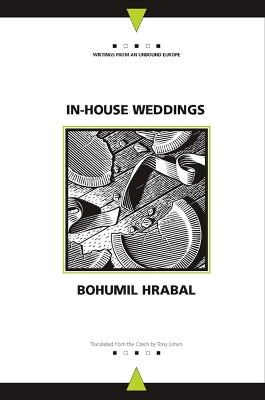Writings from an Unbound Europe
2 total works
Vita Nuova is the second in a trilogy of memoirs written from the perspective of Bohumil Hrabal's wife, Eliska, about their life in Prague from the 1950s to the 1970s, when Communist repression of artists was at its peak. Hrabal's inimitable humor, which in Eliska's ruminations ranges from bawdy slapstick to cutting irony, is all the more penetrating for being directed at himself. ""Vita Nuova"" showcases Hrabal's legendary bohemian intellectual life, particularly his relationship with Vladimir Boudnik. Hrabal creates a shrewd, lively portrait of Eastern European intellectual life in the mid-twentieth century.
Inspired by “Mrs. Tolstoy and Mrs. Dostoevsky, whose biographies about their husbands have now been published in Prague,” Bohumil Hrabal decided to produce his own autobiographical work, ostensibly fiction, from his wife’s point of view. He would write, he said, “not a putdown about myself, but a little bit of how it all was, that marriage of ours, with myself as a jewel and adornment of our life together.”
The task, taken up by such a rogue comic talent, could be nothing other than strangely delightful; and in In-House Weddings, the first of the trilogy that Hrabal produced, we meet the author through the eyes of his wife Eliska. She narrates his life from his upbringing in Nymburk through his work as a dispatcher in a train station and then in a scrap paper plant, his first publication, his trouble with the authorities, and his association with notable artists and authors such as Jiri Kolar, Vladimir Boudnik, and Arnost Lustig. Hrabal’s bohemian life was itself a source of great interest to the Czech public; transmuted here, it is even more compelling, a wry portrait of artistic life in postwar Eastern Europe and a telling reflection on how such a life might be recast in the light of literary brilliance.
The task, taken up by such a rogue comic talent, could be nothing other than strangely delightful; and in In-House Weddings, the first of the trilogy that Hrabal produced, we meet the author through the eyes of his wife Eliska. She narrates his life from his upbringing in Nymburk through his work as a dispatcher in a train station and then in a scrap paper plant, his first publication, his trouble with the authorities, and his association with notable artists and authors such as Jiri Kolar, Vladimir Boudnik, and Arnost Lustig. Hrabal’s bohemian life was itself a source of great interest to the Czech public; transmuted here, it is even more compelling, a wry portrait of artistic life in postwar Eastern Europe and a telling reflection on how such a life might be recast in the light of literary brilliance.

